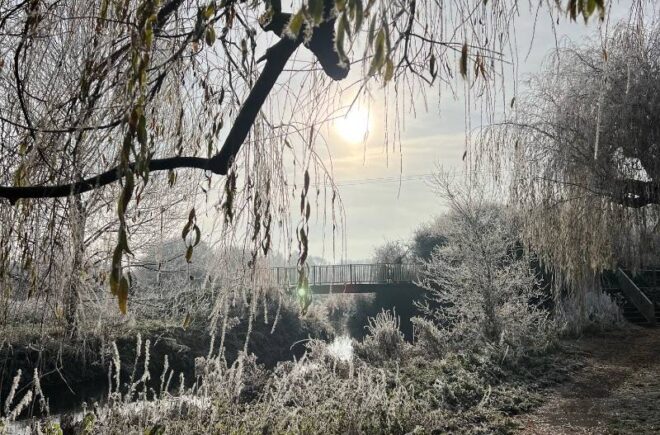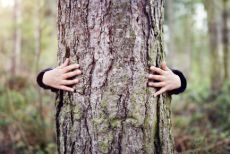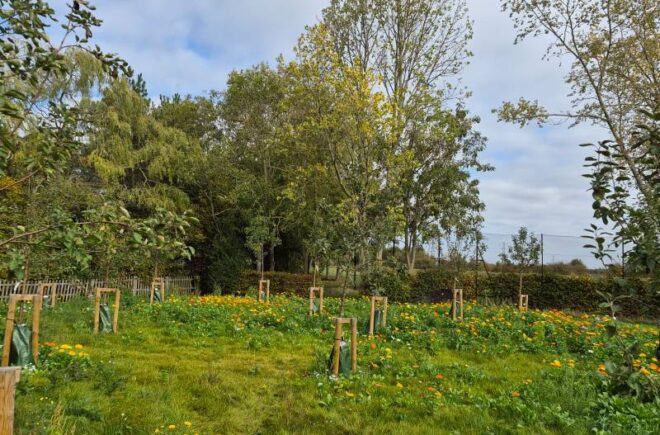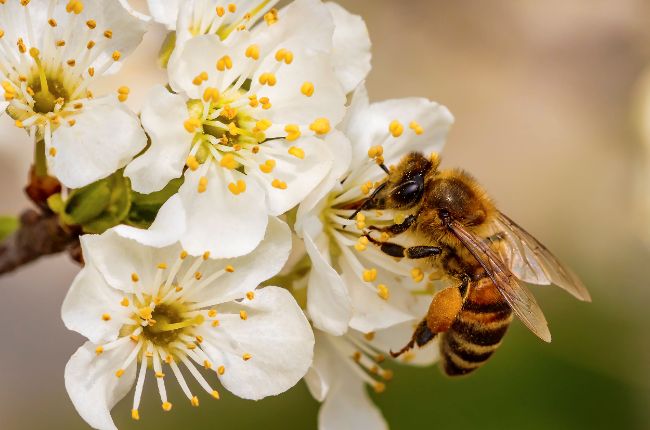
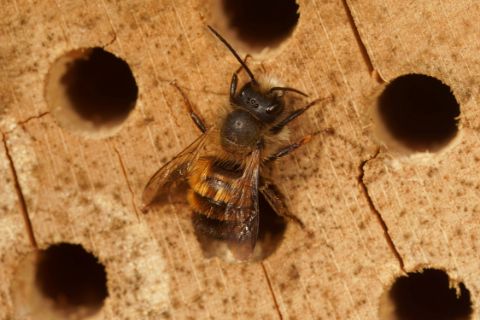

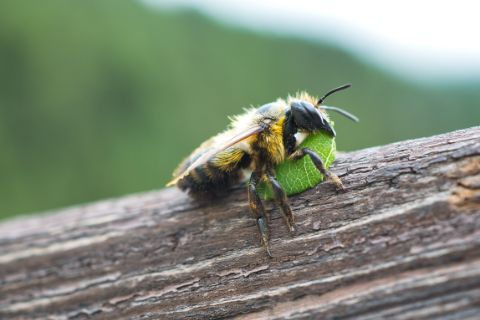
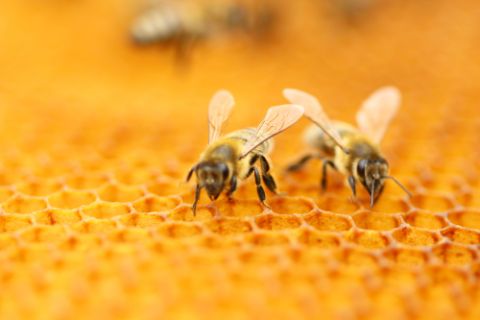
MEET THE SOLITARY BEES
You may have started to notice with the warmer weather that there are bees buzzing around between flowers, stocking up on nectar and pollen and generally making the most of the sunshine. If you look closely, you will see that many of them are not just Honey bees.
There are around 280 different species of bee native to the UK and around 250 of them are known as Solitary bees. Unlike Honey and Bumble bees the Solitary bees live and nest on their own. Here are just a few to look out for.
Mason bees
Often nest in hollow plant stems and crevices in walls but will also nest in “bee hotels”. Eggs are laid in single cells with a store of pollen and nectar and are then sealed off using mud.
Mining bees
Mining bees are the largest group of solitary bees, with 65 different species. As the name suggests, the female lays her eggs in tunnels she burrows in the ground. If you walk along a sandy path and look down at the ground, you may see little round holes surrounded by fine piles of soil. If you watch patiently, you might be lucky enough to spot a female mining bee flying in and out of the hole, depositing pollen for the eggs she has laid.
Flower bees
The most common flower bee is the Hairy Footed Flower Bee. The female is all black with bright yellow pollen baskets on her hind legs. Males are light brown. They are one of the first bees to emerge in spring and they love white dead nettle flowers.
Leaf cutter bees
Female leaf-cutter bees use their jaws to cut small sections out of leaves to construct individual egg cells in their nests. They make their nests in holes in rotting wood, or hollow plant stems. There are seven species of leaf-cutter bee in the UK.
Did you know… more than one of every three mouthfuls of food or drink that we consume are only possible because of pollination by wildlife and bees play a huge part. Sadly one-third of the UK’s bee population has disappeared over the past decade and numbers are expected to continue to decline but it’s not all bad news! There are ways that we can help and making a home for bees in our gardens is a great start. Here are a few ideas https://loveyourchelmsford.co.uk/fun-and-learning/pollinator-project/
